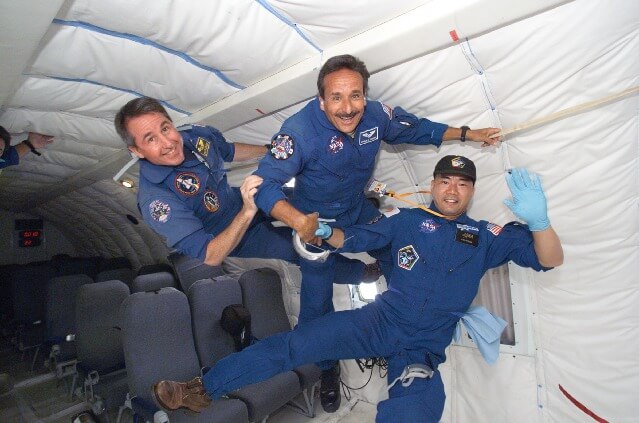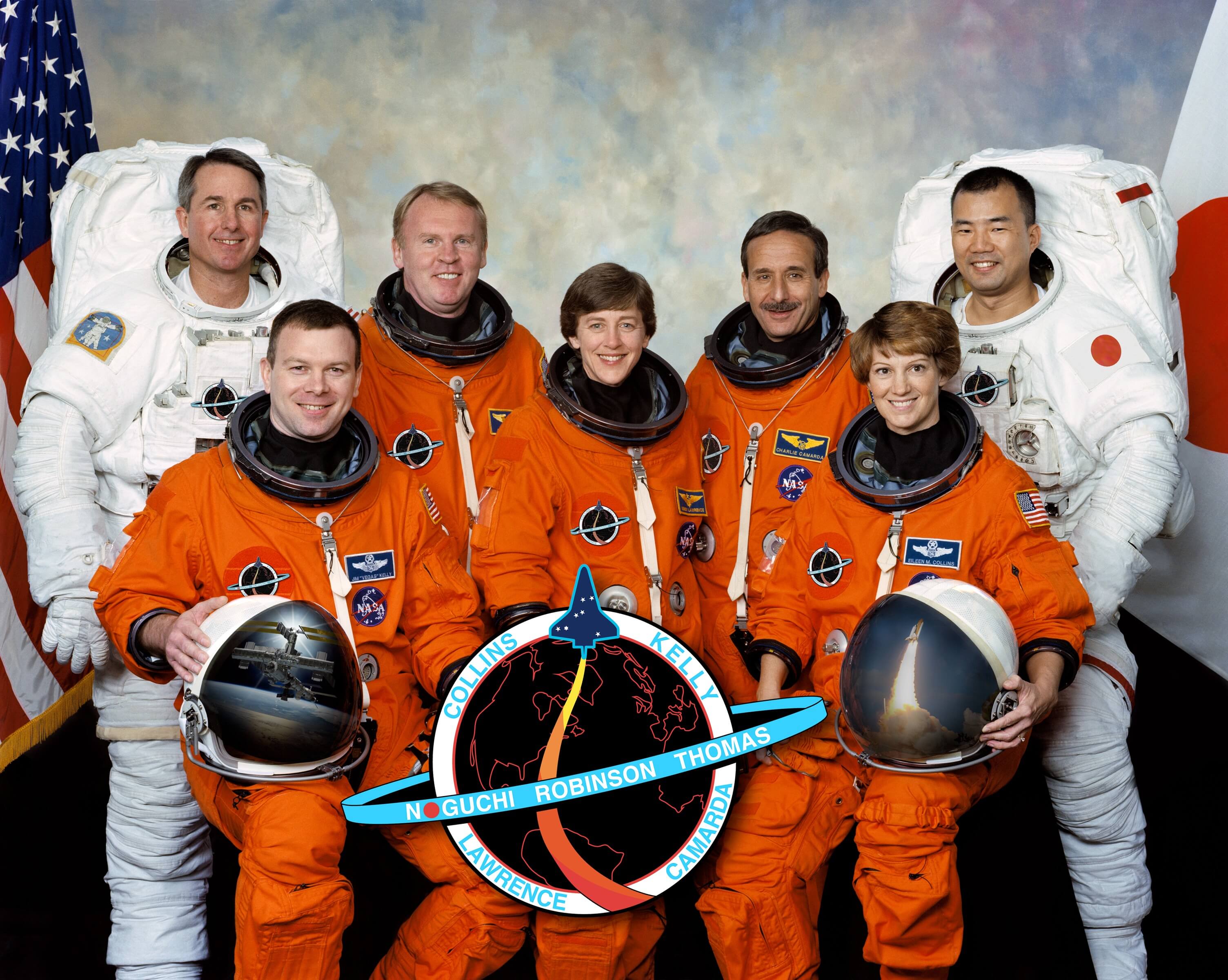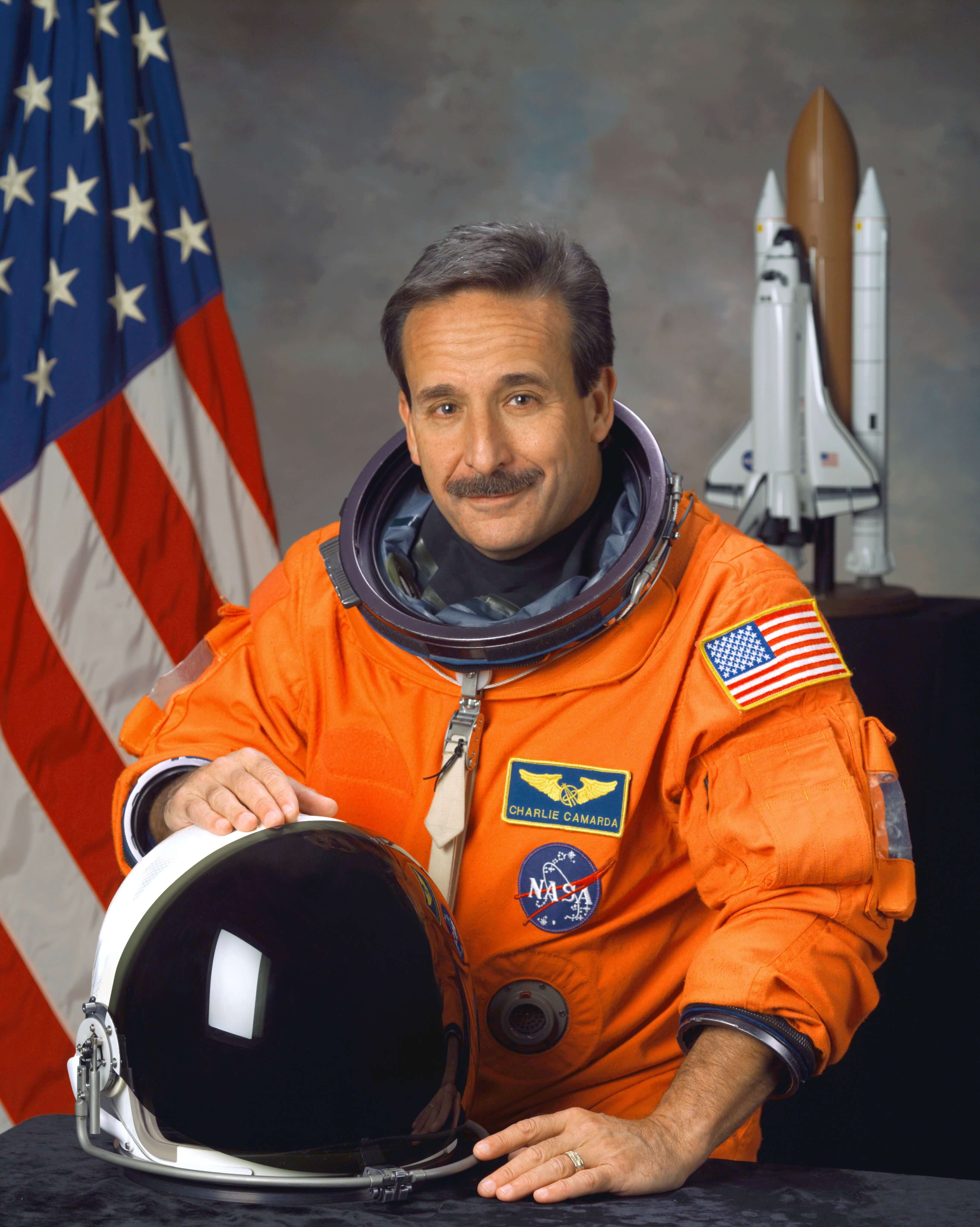Charlie Camarda is an American engineer and NASA astronaut who was part of the first mission into space after the Space Shuttle Columbia disaster in 2003. Camarda flew the STS-114 “Return to Flight” Space Shuttle mission, which launched on July 26, 2005, as mission specialist five. His 45 years of experience at NASA as a research engineer in thermal structures for hypersonic vehicles, included serving as a senior advisor for engineering development at NASA Langley Research Center.
Merve Kara from AeroTime spoke with Dr. Charlie Camarda about his experience on board the “Return to Flight” mission and his view on the future of space exploration.
The crew of STS-114. Charlie Camarda is third from the right. Courtesy of NASA.
Your mission, STS-114 “Return to Flight”, followed the tragedy of Space Shuttle Columbia. How did the accident impact your mission? Did it affect how you felt about your flight?
It did not affect how I felt about my flight. It did impact our mission as it had to be totally redesigned. It was going to be a logistics mission to carry supplies up to the Space Station and fix a large and control
gyroscopes. After the accident, it took us about two and a half years to figure out what caused the accident and to create technologies and procedures that would ensure that we would fly safely.
Our entire mission was redesigned because we had to develop new technologies to inspect the vehicle technologies to potentially repair the vehicle if there was another debris strike on our mission. For me, as an engineer, it was the perfect mission because we had a lot of experiments to conduct to test new technology and new ideas.
What was the most memorable experience for you during your lengthy career at NASA?
I had such a long career at NASA. I worked at NASA for 45 years and just recently retired. Our space mission was definitely one of the most rewarding experiences. We flew in space after the Columbia accident, we lost seven crew members friends, colleagues, and classmates. So to be able to work with teams of engineers around the country to understand and to help fix these problems to enable us to fly safely, I think that was the most memorable experience. Flying with this unique team and a very critical mission that we had and to pull it off perfectly with the help of hundreds and thousands of engineers on the ground.
On June 27, 2019, NASA declared a brand new mission on Saturn’s largest moon Titan. Mission Dragonfly will launch in 2026 and arrive in 2034. NASA predicts that it will provide clues to how life may have arisen on our planet. What can be the effects of this mission on future space missions and scientific developments? Can it mark an era like the Apollo 11 did?
I think, what we are seeing right now, is the idea that when we move further and further out into space, we are not doing it just to plant the flag and to say we accomplished something. We are doing it with the intent to basically provide a sustainable presence even on the Moon or Mars. What we learn about moons of these planets will help us determine where the best place will be maybe to initiate a colony, a base, where we could begin the colonization of one of these heavenly bodies in order to explore further and further out into space.
To do that we are going to have to learn how to live off the land – we can not carry all the supplies that we are going to need on these missions, they are very far away from the Earth and so they have to be as autonomous as possible, because the communication lag could be 20-40 minutes or longer.
I think this is a new era of exploration because we are looking at what it will take to actually live for long periods of time off our planet.
Charlie Camarda. Courtesy of NASA
The Kuiper Belt object, known as “Ultima Thule”, is the farthest in our solar system. NASA New Horizon’s flyby of that object, that took place on January 1, 2019, is a kind of mission that is accomplished using unmanned spacecraft. What do you think about the future of human spaceflight?
I think the future of human space flight is going to be a combination of all of the above. We are constantly conducting unmanned, uncrewed vehicles to go deeper and deeper out into space and I think it is going to be humans plus robotic missions in order to accomplish this.
For instance, in order for humans to survive on Mars, we are talking about the possibility of sending initial, robotic missions to help prepare the facilities that astronauts are going to use. These ideas are not any different than human exploration on the surface of the Earth. For instance, when we explore extreme environments like the North Pole or the South Pole, we might have way stations with supplies for pioneers, the explorers, to survive as they go further and further in their exploration. We are using those same techniques as we explore deep space. Only now, we have robots and are able to use them to maybe create fuel that we will use in order to supply fuel for the return trip back, habitats and initial landing pads for astronauts to use.
Looking back at the first space missions, a lot has changed since. What, in your opinion, are the most significant developments? What is the most significant change when comparing current space missions to the ones 50 years ago?
Unfortunately, I do not see much of a difference. I do not see radical improvements to the way we do things in space. There are a lot of incremental improvements in propulsion systems and material systems. We are still using chemical rockets. To go deeper and deeper into space, we really have to make radical advances in technology, especially propulsion technology. Unfortunately, the United States has not been investing enough resources in the far-out research that we need to do. We are not doing enough research in critical areas like advanced propulsion systems.
The other thing we are really not doing is improving the safety of these missions. I have not seen a radical improvement to the safety of how we fly people to space until we do that, I really do not believe commercial spaceflight is going to take off. Imagine there was one-in-fifty chance that an aeroplane would crash. Would you fly on that aeroplane?



